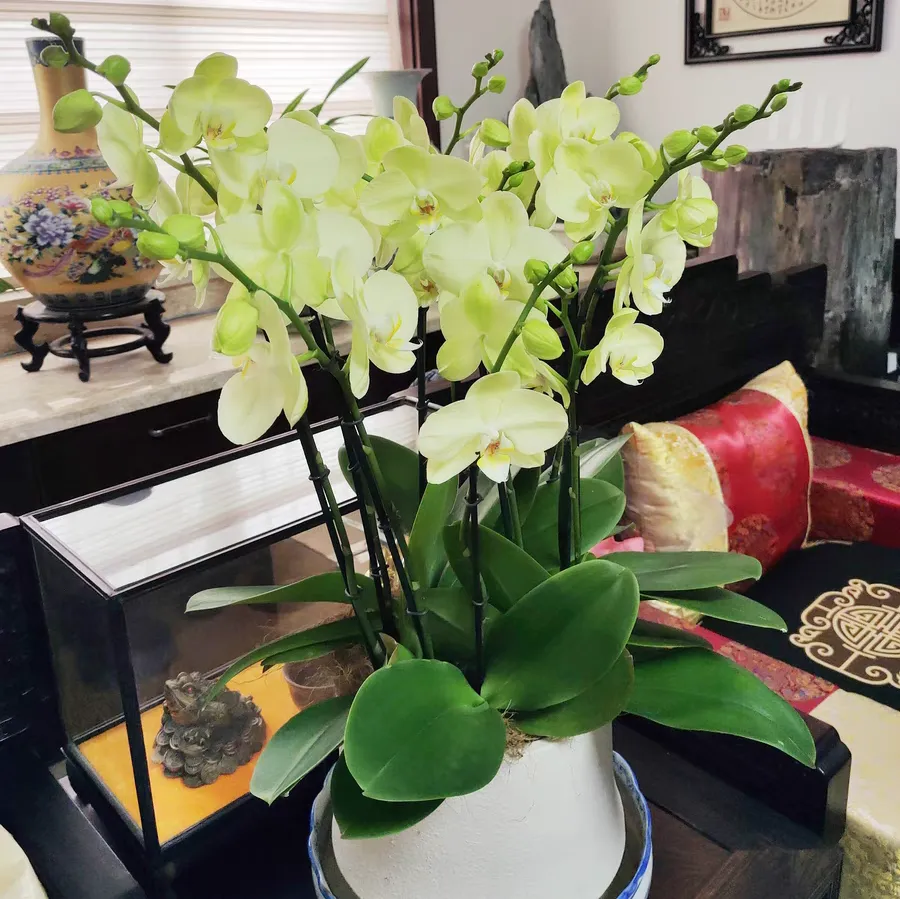Today, let's learn how to prevent newly purchased Phalaenopsis orchids from withering due to improper acclimation – even beginners can master these tips with ease.
### Upon Receiving Your Phalaenopsis: Conduct a Comprehensive Inspection
1. **Root Health Check**: Healthy roots should be plump, light green or white, with elasticity – no blackening or mushiness. If局部腐烂 (localized rot) is found, trim with sterilized scissors and apply carbendazim powder to the wound to prevent infection.
2. **Leaf & Pest Inspection**: Examine leaves for yellow/black spots, holes, or powdery mildew. Check leaf undersides for spider mites, aphids, etc. Isolate the plant immediately if issues are found to avoid disease spread.
3. **Flower Stem & Bud Check**: Gently touch the flower stem to ensure it’s firm. Buds should be tight and plump. If wilting or bud drop occurs, assess the plant’s overall condition further.
### Create a Strict Temperature & Humidity Environment (Native to Tropical Rainforests)
1. **Temperature Control**:
- Ideal range: 20–30°C.
- Winter (northern regions): Use a heating pad or mini greenhouse if room temperature drops below 15°C to prevent frost damage.
- Summer: Cool with AC or fans if temperatures exceed 32°C.
2. **Humidity Management**: Maintain 60%–80% humidity using a humidifier, water tray, or misting the surrounding area (avoid direct leaf contact to prevent rot).
### Optimal Placement for Faster Recovery
1. **Light Requirements**: Choose a well-ventilated area with bright, diffused light (e.g., east-facing windowsill or 1–2m from a south-facing window). Avoid direct sunlight, especially midday rays, which can scorch leaves.
2. **Ventilation**: Ensure air circulation but prevent cold drafts. Place near a fan on low speed or open windows 2–3 times daily for 30 minutes to reduce pest/disease risks in stuffy environments.
### Watering Principles: "Water When Dry, Prefer Dry over Wet"
1. **Dryness Judgment**:
- Check medium color (sphagnum moss turning white) or insert a bamboo stick – water if no moisture sticks to it.
- Aerial roots: White = water needed; green = wait.
2. **Watering Methods**:
- Soak the pot in water for 10–15 minutes, then drain completely; or water slowly along the pot edge.
- Winter: Use water at room temperature to avoid shocking roots.
3. **Frequency**:
- First 1–2 weeks: Water every 7–10 days.
- After stabilization: Shorten to every 5–7 days.
### Cautious Fertilization During Acclimation
1. **First 2 Weeks**: Stop fertilizing to prevent root burn from weak roots.
2. **After 2 Weeks**: Use 2000x diluted orchid-specific fertilizer, spraying leaves or watering roots every 15 days. Resume normal fertilization when new shoots emerge.
### Key Notes
1. **Avoid Frequent Moving**: Relocation keeps the plant in a stressed state – fix a position once chosen.
2. **Delay Repotting**: Only repot if the original pot is waterlogged or medium is rotten. Use a breathable, transparent plastic pot with sphagnum moss/bark medium.
3. **Acclimation Period**: 2–4 weeks. Minor yellow leaves are normal; no need to intervene if roots remain healthy.
With these steps, your Phalaenopsis will thrive! 🌸
#OrchidCare #PlantAcclimation #BeginnerGardening
How to Acclimate Online-Purchased Phalaenopsis Orchids

Share with
Tagged in :




Leave a Reply